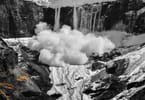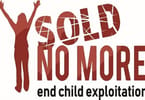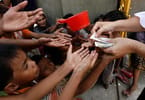KATHMANDU, Nepal – Three months after Nepal was struck by a devastating 7.8M earthquake, thousands of people continue to require humanitarian assistance in order to meet their basic needs.
Since the earthquake, the Nepal Red Cross Society and the global Red Cross and Red Crescent Movement have focused their efforts on providing relief, shelter, medical care and safe water to communities in the 14 worst affected districts.
“The devastating effects of the disaster continue for many people in their daily lives,” says Dev Ratna Dhakhwa, Secretary General of the Nepal Red Cross Society. “People still need relief assistance and our priority is to reach remote communities in the mountains with supplies before they are cut off by the monsoon.”
Many roads are treacherously narrow and winding and with the rains, they are prone to frequent landslides. The Red Cross assesses on an hourly basis which routes are safe enough to transport aid. To add to the complexity, many people have left their villages because their houses were damaged by the earthquake or they fear landslides. This means that relief efforts need to be sufficiently agile to deliver services to where people are relocating.
“Although Nepali people are used to living in a challenging environment, the impact of the earthquake coupled with high levels of poverty has stretched their coping mechanisms to the limit,” says Al Panico, Head of Delegation with the International Federation of Red Cross and Red Crescent Societies (IFRC) in Nepal.
The Red Cross continues to focus on providing shelter materials as well as food and essential non-food relief such as household items. Medical teams remain active and the need for longer term psychological support to survivors is a priority. Distributions of cash grants have been integrated into the Red Cross response and millions of litres of clean water have been provided to survivors.
“We have planned a long-term recovery programme aimed at helping people to rebuild their lives,” says Mr Panico. “This will include support to rebuild homes and livelihoods and health programmes that include improvements in the provision of water, sanitation and disease prevention. It is a massive challenge given the scale of the needs, the terrain and the huge task of rebuilding homes before the winter sets in.”
WHAT TO TAKE AWAY FROM THIS ARTICLE:
- “Although Nepali people are used to living in a challenging environment, the impact of the earthquake coupled with high levels of poverty has stretched their coping mechanisms to the limit,” says Al Panico, Head of Delegation with the International Federation of Red Cross and Red Crescent Societies (IFRC) in Nepal.
- Since the earthquake, the Nepal Red Cross Society and the global Red Cross and Red Crescent Movement have focused their efforts on providing relief, shelter, medical care and safe water to communities in the 14 worst affected districts.
- It is a massive challenge given the scale of the needs, the terrain and the huge task of rebuilding homes before the winter sets in.






















